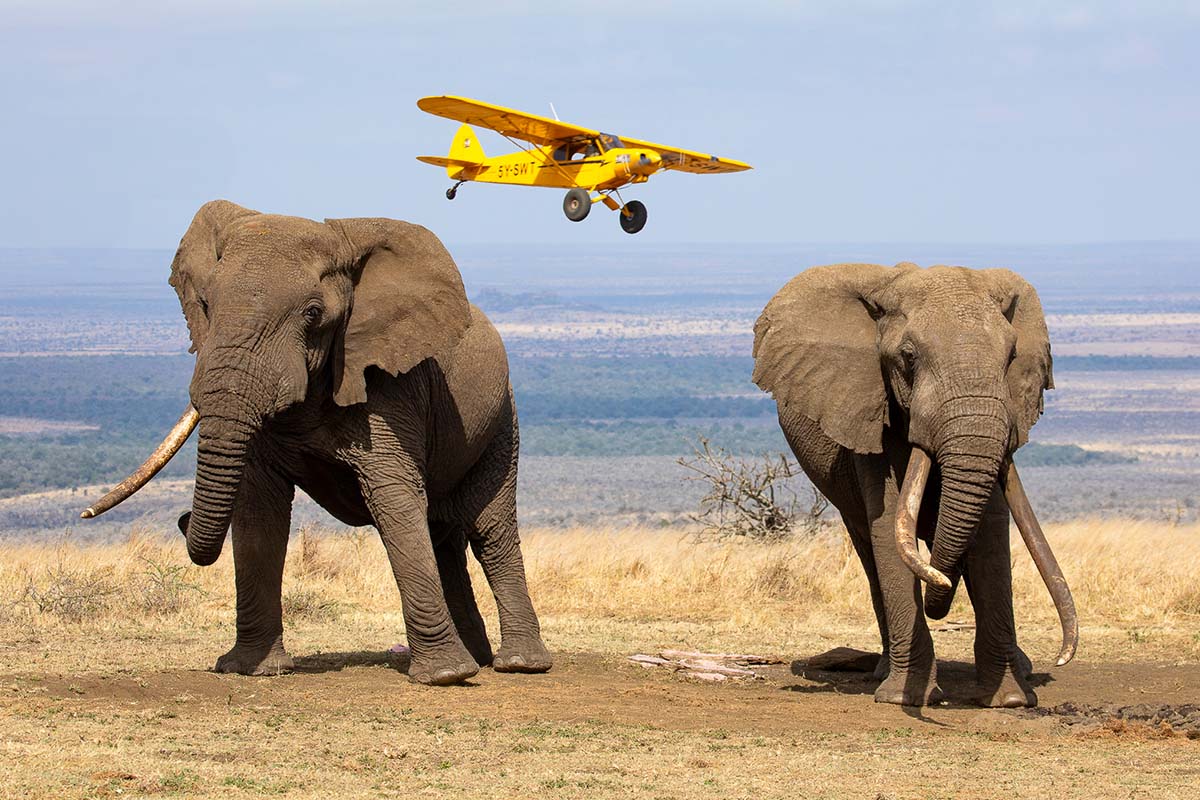
When rain falls, wildlife goes on walkabout. When that happens, surveillance from above becomes crucial to mitigating conflict and preventing poaching.
The wet season is really kicking into gear now, and herbivores are taking full advantage of the emerging bounty by dispersing far beyond their usual dry season range. Elephants, especially male elephants like these two - Lobolo (left) and One Ton (right) - are particularly fond of wandering afield.
With 390 rangers spread across our area of operation, there is not much that we miss, but of course, elephants don’t adhere to invisible man-made boundaries.
To monitor wildlife like these two elephants, we go airborne. Enter the Super Cub: a lightweight aircraft, capable of flying and landing anywhere and the perfect means with which to monitor wide-ranging species like elephants.
In this year alone, our aerial unit has patrolled over 24,000 km. That’s equivalent to flying the length of Africa three times. Our Super Cub was instrumental in the radio collaring operation of Esau earlier this year, who subsequently roamed through hunting blocs in Tanzania and back to safety in Amboseli National Park.
It also helped support ground teams by shepherding elephants out of farms and stopped two lion hunts before any animals were injured. Beyond wildlife monitoring, aerial patrols also helped identify 12 cases of illegal activity, from clearing wild land for farming, illegal grazing, illegal sandalwood harvesting, charcoaling, and bushfires.
We are extremely grateful to the Elephant Crisis Fund which has supported our aerial operations since 2014.
📸: Joshua Clay
